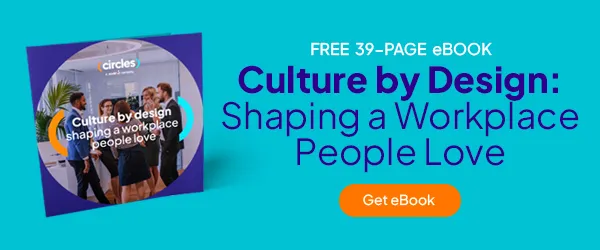The employee experience revolution: support that makes a difference

Work has changed. So have the expectations of the modern workforce. Employees want more than a paycheck and a ping-pong table — they crave a workplace that supports their personal and professional lives, creates a sense of belonging and helps them thrive. This is the employee experience revolution, and it’s reshaping how businesses attract, engage and retain top talent.
Gone are the days when basic perks were enough. Today, the organizations that lead are the ones rethinking their workplace experience. They’re introducing thoughtful amenities, personalized services and community-focused programs that support real needs. These changes are driving business outcomes by improving employee retention, engagement, productivity and culture.
Why the employee experience revolution Is urgent
The stakes have never been higher. A disengaged workforce is costly. According to Gallup, low engagement costs the global economy $8.8 trillion annually. Meanwhile, high turnover strains teams, slows progress and damages customer satisfaction. Simply put, the old model of perks no longer aligns with today’s workforce priorities.
Changing employee expectations post-pandemic
The pandemic prompted a massive shift in how people view work. Flexibility, purpose, mental health and personal well-being have taken center stage. Employees are making intentional choices about where they work and why. Businesses that adapt to changes in the work environment are proving to be better positioned to thrive.
Employees now expect workplace amenities that address their real needs: flexible work options, emotional wellness support, opportunities to grow and time-saving services that lighten the load at home and at work. It's about creating a workplace where employee well-being is prioritized, and people feel supported and understood. Hybrid work has blurred the line between personal and professional life, so the workplace must support the whole person, not just the worker.
Perks vs. purpose: what's the difference?
A stocked snack cart or casual Fridays won’t win hearts. Instead, employees want benefits that align with company values and support their lives holistically. A meaningful employee experience strategy connects daily touchpoints with an overarching mission. Companies like Circles are leading this charge with workplace hospitality management services that are personalized, intentional and proven to build a stronger relationship between employee and employer.
Purpose-driven benefits create deeper emotional connections. For example, offering mental health support or concierge services shows that a company sees its employees as people first. That kind of support improves trust, enhances loyalty and ultimately strengthens the workplace experience.
1. Craft a compelling employee value proposition (EVP)
Your EVP should answer a simple question: why should someone choose to work here? This statement is more than a marketing slogan — it’s a clear articulation of what makes your organization unique and what employees can expect in return for their work.
A strong EVP integrates real employee feedback, reflects your company’s values and showcases how your team supports growth, purpose and well-being. It should be consistent across all touchpoints, from job descriptions to onboarding content to internal communications. Activating and communicating your EVP throughout the entire employee lifecycle — from recruitment to development to exit — reinforces trust and strengthens alignment at every stage.
Circles helps employers highlight their EVP by designing workplace experiences that reflect what employees value most.
Think of your EVP like the back cover of a bestselling book. It gives people a glimpse into what they’ll experience and helps them decide whether to join and stay. In a tight labor market, a compelling EVP acts as a magnet, attracting like-minded talent and repelling mismatched expectations.
2. Prioritize meaningful benefits over freebies
Employees are looking for benefits that make a genuine impact. Think wellness support, access to mental health services, flexible scheduling and help managing personal tasks. Workplace support services like errand running, travel planning and concierge programs save employees time and reduce stress, resulting in higher engagement and productivity.
No two employees are the same, and benefits shouldn’t be either. Companies that offer personalized benefits stand out in a crowded job market and keep people around longer.
One-size-fits-all perks can feel hollow, while targeted benefits and services show care and intentionality. For example, a working parent may appreciate childcare resources or meal planning assistance. A recent graduate might value mentorship programs and financial literacy content. The right benefits tell your employees: we see you.
3. Empower self-directed career growth
Employees want control over their career development journey. They expect tools, coaching and internal mobility options that let them chart their own course. A good example: Walmart has created “pipeline programs” that help move current employees into new jobs within the company. One of these programs helps frontline associates become truck drivers and technicians.
The employee experience revolution emphasizes autonomy and activation. Circles helps companies connect their people to learning and growth opportunities, leadership coaching or even networking groups within their organizations. Giving employees the resources to grow keeps them engaged, invested and excited for what’s next.
4. Cultivate culture of belonging & psychological safety
An inclusive, safe culture is essential. Employees need to feel heard, respected and valued to do their best work. A strong sense of belonging boosts collaboration, creativity and loyalty.
Real community is built through shared experiences. Circles helps companies create community at work through events, social programming and group activities that bring people together. It’s not about forced fun — it’s about building genuine connections. A culture that prioritizes belonging helps employees feel like they’re part of something greater.
Leaders play a crucial role here. Psychological safety starts at the top with managers who listen, respond and lead with empathy. A strong community at work can buffer the stress of change and uncertainty.
5. Align workspace with technology & culture
Great workplace design is more than just beautiful offices — it’s about creating a seamless experience across physical and digital environments. With hybrid and flexible work models, it’s crucial that culture and tools are integrated into the places people work.
Smart workspace planning takes both technology and human needs into account. Circles’ workplace experience programs bridge the gap, integrating hospitality services with existing workplace operations. Whether employees are in the office or remote, their experience should be consistent, connected and empowering. Our eBook: Culture by Design devotes a whole chapter to the workplace environment.

Employees should feel supported the moment they walk in the door or log in from home. That means intuitive tech, easy-to-use communication tools and seamless support.
6. Shift from transactional to transformational rewards
Recognition and rewards should inspire and connect, not just check a box. While gift cards and bonuses still have a place, companies are moving toward experiences and shared moments that foster deeper engagement.
Circles supports this shift by helping employers design personalized programs that reflect their culture and values. These programs may include employee appreciation events and other curated experiences that make employees feel seen and valued.
Transformational rewards recognize the how, not just the what. Celebrating collaboration, empathy or innovation tells employees that values matter. It also creates emotional resonance — something a generic gift card rarely achieves. Appreciation should be part of everyday culture, not an annual afterthought.
7. Embed EX metrics into leadership accountability
You can’t improve what you don’t measure. Companies leading the employee experience revolution are integrating EX metrics into leadership goals and tying outcomes to sentiment.
This includes:
- Regular employee satisfaction surveys
- Post-event and program-specific feedback
- Utilization rates for workplace services
- NPS scores for employee experience programs
Circles offers tools and resources to collect, analyze and act on this data. Their insights help companies continuously adapt their strategy and prove ROI to leadership.
Accountability starts with visibility. Make EX metrics part of your dashboards, leadership reviews and team goals. When improving the employee experience becomes a shared responsibility, everyone wins — and so does the bottom line.
A culture-first approach wins
The businesses leading today are those that put culture first and see the workplace experience as a strategic advantage. By investing in thoughtful workplace amenities, personalized services and workplace hospitality management, companies signal care, drive retention and stand out in a competitive economy. The employee experience revolution is here — and it’s not a trend; it’s the future of work. To see how Circles can support your employee experience strategy and help your company thrive, book a meeting with a specialist.
Frequently asked questions on employee experience revolution
What is meant by "employee experience revolution"?
The employee experience revolution refers to the shift from traditional perks and one-size-fits-all benefits to a more holistic, personalized approach that supports employee well-being, community and growth. It emphasizes purpose, culture and meaningful engagement as key business drivers. It represents a reimagining of work where employee expectations, business strategy and values intersect.
Are perks still relevant in 2025?
Yes, but only when they align with employee needs and company values. In 2025, perks must be thoughtful, inclusive and part of a broader employee experience strategy. The focus is less on flashy extras and more on programs that make employees’ lives easier, healthier and more fulfilling. Perks should be intentional, not ornamental.
How can businesses implement an EX revolution?
Start by listening to your employees and evaluating what they truly need. Use data to identify opportunities, and partner with experts like Circles who specialize in workplace hospitality management services. Create a strong EVP, personalize your benefits, and embed accountability for EX into leadership goals. The result: a workplace experience that drives real impact.

